I'm wondering how to have a log-log plot for visualizing the frequency of elements in a list, for example:
my_list=[1,2,3,3,3,4,1,2,5,2,10,4,5,3,3,3,2,1]
I plotted data using a histogram:
plt.hist(my_list, label='Frequency Distribution of matches')
plt.legend()
plt.ylabel('Frequency')
But it would be better to visualize it as log-log.


